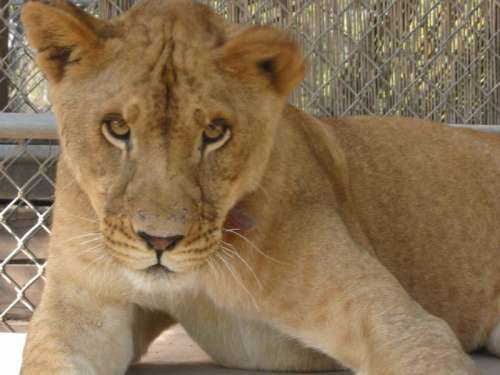 |
Lion
Panthera Leo
Kingdom: | Animalia | Phylum: | Cordata | Class: | Mammalia | Order: | Carnivora | Family: | Felidae | Genus: | Panthera | Species: | Leo |
|
Description
Lions have a broad face, rounded ears, and a relatively short neck. Male lions have a mane, which varies in color. It usually is a silverish-grey or a yellowish-red. The darker the mane the older the lion. Captive lions are known to have longer and fuller manes than wild lions. The underside of males is a buff color, while the females' underside is whitish in color.
Click
Here to See Lion Pictures
Average Statistics
Length | 9 ft. |  | Weight | 300-500 lbs. | Geographic Range | Northern Africa | Territory Size | 40-400 sq. mi. |
DietLions eat a variety of large mammals. OffspringLions typically have 3 cubs after a gestation period of 4 months. Cubs are blind at birth, and require much care by the lionesses of the pride. They will reach 200 lbs within 2 years. SoundsLion cubs emit an "Aa Owwww" type of sound. Our staff sometimes call them UhOhh babies. Angry lions are generally more prone to roaring than hissing. Lions can communicate up to five miles through a gutteral bellow. Relationship with HumansLions are revered in most cultured. Truly wild lions are particularly susceptible to poaching due to their habitat in the open plains and their numbers in truely wild environments are declining. Lions in sanctuaries have stable populations, and as a result, they are not currently listed as endangered. However, due to obervations that their overall territory is shrinking, Lions are on the IUCN watch list. |

